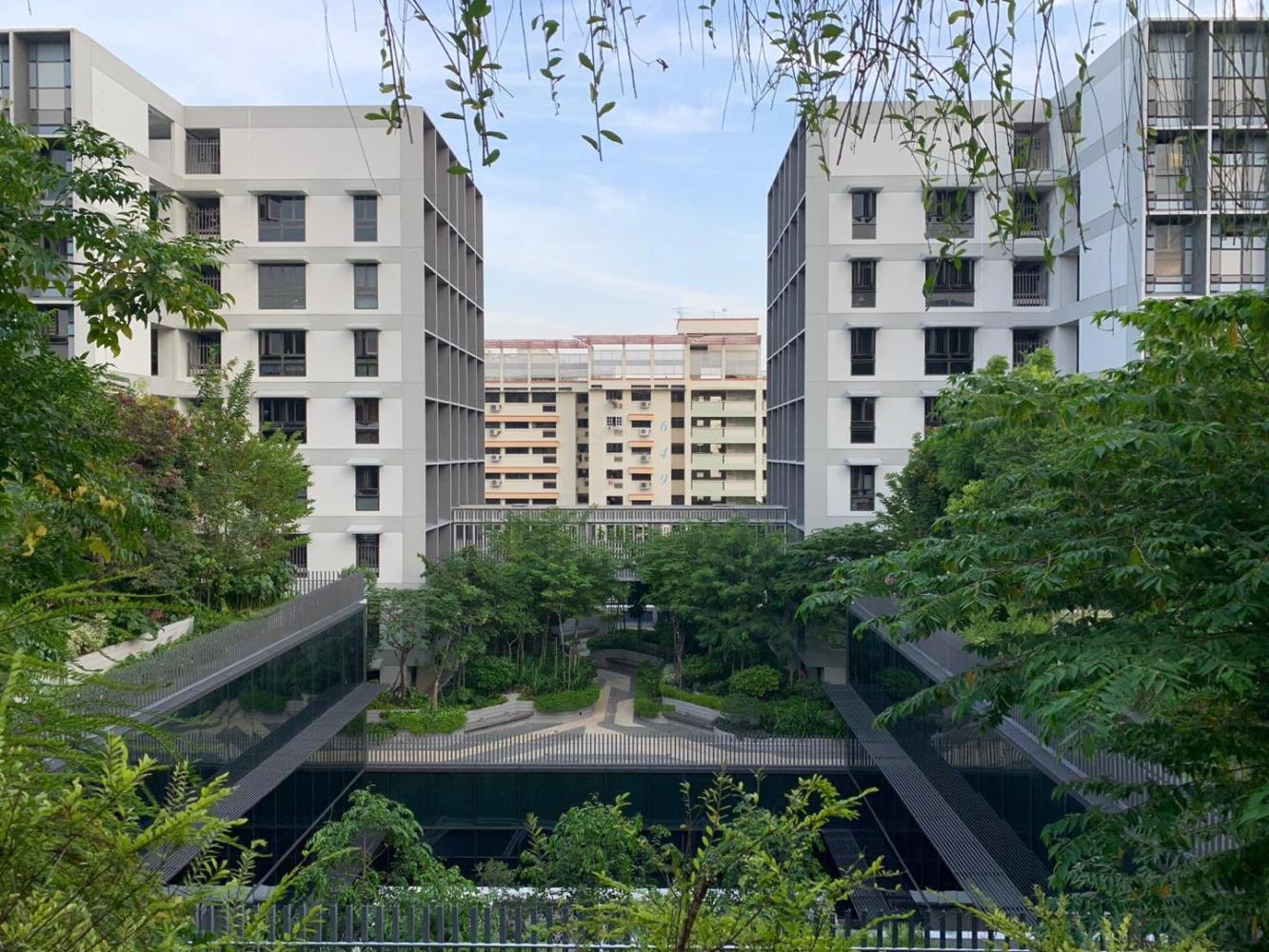Yap loves design, travel and everything beautiful in life. He writes for various media about travel and design and has published works, including Wander Bhutan and Myanmar Odyssey. Formerly publisher of Lonely Planet (China Office), Yap is now Chief Content Officer of Youpu Apps, a Beijing based travel app company.
Early in the morning, the neighbours sent some red eggs to me. It turned out to celebrate their grandson’s full-moon. In the corridor, my Indian neighbour’s long beans have swung in the air. The pomegranates of Chinese neighbour borne rich fruits. The residents in the 13th floor were the most exaggerated, as the walkway of 13th floor has become their personal beautiful flower bed. Well-tended orchids were flying in the wind.
To go out for lunch, I found that there were some Chinese neighbours holding a funeral and selling wreaths in the multifunctional space on the ground of Housing and Development Board flat (HDB flat), which is called void deck by the local. Just a few days ago, some Malaysian youths held a wedding ceremony in the same space and invited the band to celebrate together. The lives and deaths of Singaporeans, as well as the sadness and joy, were played out in the HDB flat.
When I told my foreign friends that I lived in “Zu Wu” (Chinese pinyin), their first thought was that I was living in a house left by my parents and grandparents. HDB flat (it got its Chinese name “Zu Wu” because it was built in groups), also called public housing in Hong Kong, national residence in Taiwan and affordable housing in Mainland China, is the public housing built by the Singapore government for ordinary families. However, if you know or have seen Singapore’s HDB flats, they may not be as bad as you think. Many of them have won the International design awards.
Nowadays, there are more than one million units of HDB flat in Singapore, scattered in two dozen HDB districts across the island. These HDB areas are well equipped with facilities such as public swimming pools, libraries, shopping centres, schools, kindergartens and so on. So, to experience the everyday life of Singaporeans, we must visit the HDB area.

My favourite HDB flat “Tiong Bahru” is located in the centre of the town, which are the oldest HDB flat in Singapore and was built in the 1930s. This low-floor HDB flat is in the Art Deco style which was popular in the 1930s, when people learned from machines. So many HDB flats are shaped like ships or planes. If you’ve been to Miami, you probably know what kind of houses I’m talking about.
This is Singapore’s oldest HDB area and has become a popular block where trendy young people like hanging around. There are plenty of good restaurants with affordable prices in this tree-lined block as well as many cafés or bakeries run by foreigners. What’s more, it still worships the slow pace of life, like a small village in a busy city. More and more young people choose to buy a house and strike roots here, making this ageing area younger.
Not far away stood the Pinnacle@Duxton which is an award-winning HDB flat. This building is 50-storey-high, so it is called Pinnacle and is also the tallest public housing building in the world. Built in 2009, with nearly 2,000 units and 35 types, two open skybridges are definitely the most eye-catching signs for The Pinnacle. With a length of 500 metres, these skybridges are also the longest in the world, which are located on the 26th floor and the 50th floor respectively. A runway is provided on the 26th floor for residential use only, while the skybridge on the 50th floor is open to the general public. The bridge organically connects the seven residential blocks of HDB flats together, with green plants, outdoor furniture, installation art, etc. Residents can stroll across the bridge and watch the sunset. And there are dense financial buildings in front of them. Not far away, the vast marina bay coupled with the lush Bukit Timah Nature Reserve enables the ordinary people enjoy the five-star scenery in their own homes.
As the population ages, the Singapore government has also introduced HDB flat suitable for the elderly. Because the design is humanised, and the price is affordable (about 45 square metres of each unit, the selling price is about SGD100,000). So, it is well-received by the citizens. Designed by Singapore’s leading architecture firm WOHA, this multi-unit housing for retirement, healthcare, housing and commercial space has attracted a lot of attentions as it won the architectural design of the year award at the World Architecture Festival in 2018. The building is small but has a combination of functions. On the ground floor, there is a space for residents to take part in various activities, as well as a hawker centre offering cheap foods, medical clinics and so on. There is even a nursery, as most of the elderly in Singapore will help to take care of the young children. The whole building is filled with green and leisure spaces, like a small self-sufficient village. Open gardens and vegetable gardens are also provided on the roof and corridors of the HDB flats to encourage the elderly to work and strengthen their health in addition to promoting neighbourhood relationships. HDB flat not only meets the living conditions, but also takes care of the physical and mental needs of the elderly.